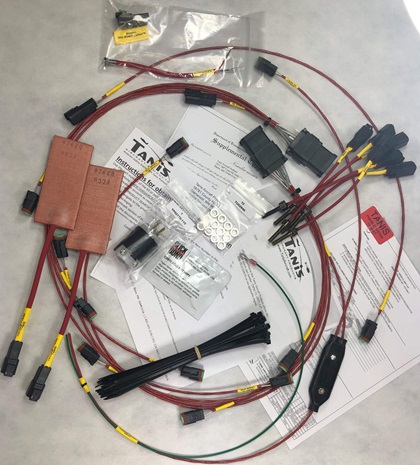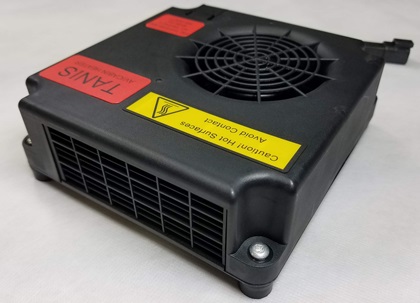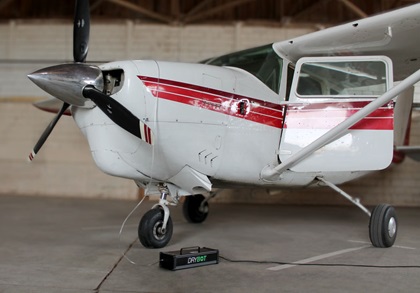Aircraft Maintenance: Mitigating the hazards of frigid weather
The winter months can be extremely hard on aircraft (and pilots). Cold weather affects aircraft in a number of ways, few of them beneficial, but long periods of inactivity create problems, too. The best thing you can do for an aircraft is to fly it. So, let’s focus on mitigating the risks of winter flying and getting airborne as much as possible.

Understanding how the cold affects your aircraft is the key to making sound maintenance decisions. For starters, everything slows down in the cold, from chemical reactions to the very atoms that make up every part of the airplane. Batteries lose capacity and avionics displays can become dim and slower to update when temperatures drop. As atoms decelerate with less energy at colder temperatures, they can fit together more closely. This causes solid materials like metals and plastics to contract, shrink, and become less flexible. An entire airframe can shrink enough to affect the tension on its control cables. Oils and greases get thicker, making valves, controls, and switches harder to move. The increased friction and dimensional changes can affect many different aircraft systems.
The different metals that make up the engine (including steel, aluminum, and brass contract or expand at different rates. When an engine is cold soaked, the tolerances of critical components are vastly different from when the engine is at operating temperature. More importantly, during a cold start they each expand at different rates until they reach operating temperature. Engine manufacturers account for these differences during normal weather, but not in extreme cold. Since a running engine heats up different parts at different rates, many engines run the risk of clearance issues as the engine goes from below freezing to operating temperature. For example, a piston will heat up much faster than the rest of the cylinder,. which can cause piston scuffing on the cylinder walls.
- Even heating of all internal engine components.
- Heating of the propeller hub, governor, fuel components, control cables, battery, and other components.
- Avoiding moisture condensation on colder components.
That last point is extremely important. Heated air can gather moisture from warm parts of the engine and condense it onto cooler components. This becomes more critical the longer that a preheat system is active. A complete Tanis system used along with a cowl blanket reduces or eliminates the ability for corrosive condensation to form on critical components. However, an oil pan heater does exactly the opposite. Warm oil emits moist, corrosive air, which then condenses on the cam, starter adapter, and other unheated components, causing significant damage over time.

If you’re living the dream and flying every few days, you can leave a Tanis system plugged in full time. But if you’re flying every one or two weeks, it’s much better to preheat the entire engine compartment on an as-needed basis. This process can take two to six hours, depending on the environment. If your airport offers Wi-Fi access, there are many low-cost power switches available to remotely control your preheat. If not, you will have to plug in the day before or go early and wait until everything is up to temp.
When you’re not flying, a great solution to the dilemma of condensation and corrosion is the new DryBot system from RPX Technologies. The DryBot is a completely automated system that forces pre-dried air into the engine, expelling moisture through the air intake and oil breather. It’s a year-round system, as effective in high humidity summer months as it is during winter storage time. It’s designed to maintain internal engine humidity below the critical relative humidity at which corrosion occurs on steel surfaces such as cams and lifters.

Lastly, let’s not forget everything behind the firewall. Years ago, I flew out to Oshkosh, Wisconsin, to meet with Experimental Aircraft Association CEO Jack Pelton on a cold February day in my Grumman AA-5 Traveler. As I was getting ready to leave, I slid the canopy closed only to have my fingers crack right through the plastic trim. Lesson: The cost of a heated hangar would have been much less than the cost of replacing the broken interior plastic.
Since a heated hangar isn’t available to most of us, the alternative is to heat the cabin along with the firewall-forward area. It pays to be very careful here. I’ve heard of people using ceramic heaters, marine heaters, or gun safe heaters, but I wouldn’t trust the safety of my aircraft to one of those. Tanis offers a certified cabin heater that can stand alone or be integrated with their engine heating system. It warms the entire cabin, protecting avionics and interior plastics in the process. According to Tanis President and CEO Doug Evink, it also prevents the windshield from fogging up during start-up and taxi. As an added benefit, energy absorbing seat foam (such as in Cirrus aircraft) won’t be hard as a rock until halfway through your flight.
Winter flying is good for your aircraft, your proficiency, and your spirits. With proper planning and preheating, you can enjoy clear skies and improved performance as you search for that next $100 hamburger (or bowl of steaming chili). Until next time, I hope you and your families remain safe and healthy, and I wish you blue skies.


